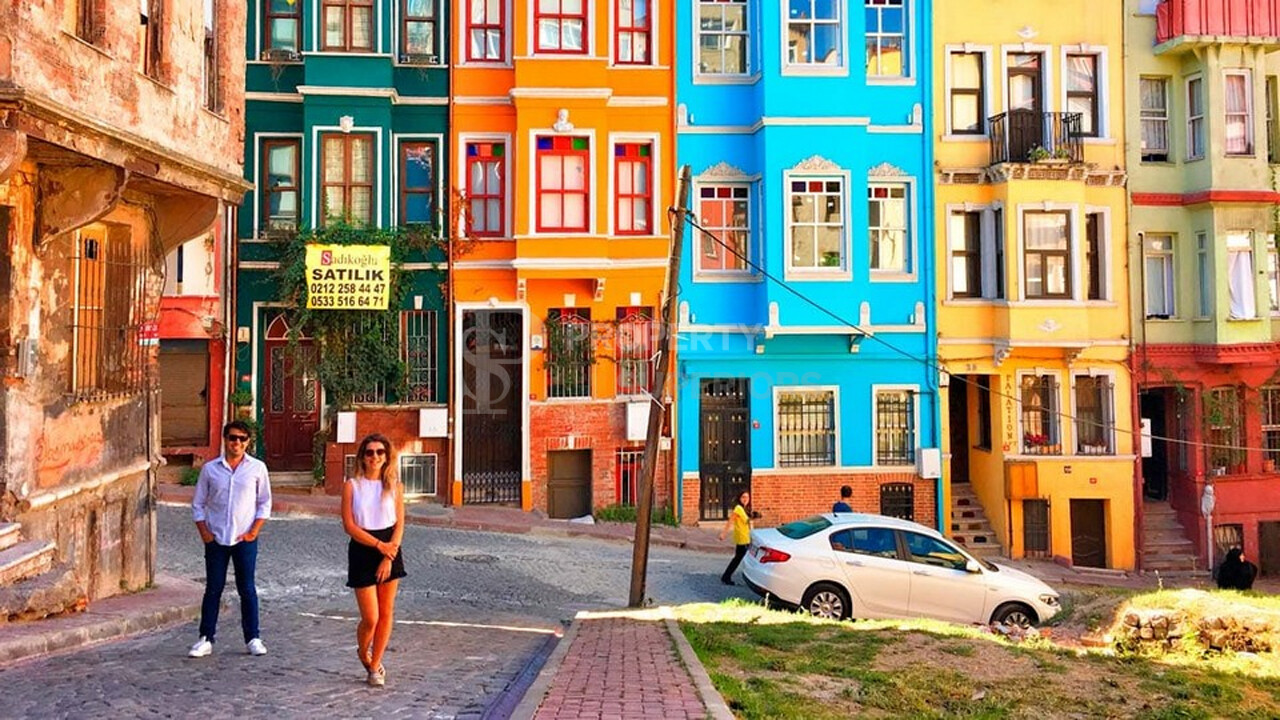
The Republic's social structure, which was founded on the agricultural economy that it had inherited from the Ottoman Empire, was primarily rural. However, millions of people moved from rural to urban areas as a result of the mechanisation of socioeconomic policies in agriculture in the 1950s, particularly with the 1948 Marshall Plan, and the growing number of tractors. This led to structural changes in agricultural activities. The 1950s saw an acceleration of urbanisation, giving the neighbourhood a new dimension and making flat culture the hub of daily life. Nonetheless, Turkey had impoverished hillsides encircling the city with the migration, much like western nations that were following the trend of industrialization and urbanisation. While close neighbourhood relations are still present in many cities' shanty neighborhoods—particularly in large cities like Istanbul—urban transformation projects have recently begun to erode those ties. This is because each shanty brings its unique culture to the neighbourhood. What you should know about Turkish flat culture and neighbourly ties is provided below.

Relations between Neighbours in Turkish Society
The definition of a neighbourhood in our society can be found in the proverbs that characterise the characteristics and significance of the neighbourhood. The adage "Do not get a house, get a neighbour" highlights the value of the neighbourhood relationships that develop from a home's physical proximity after purchase, as opposed to the house's actual quality. Another phrase, "neighbour to neighbour in need of ash," highlights the value of sociality and neighbourly relationships by asserting that since humans are not naturally self-sufficient, they can meet their needs and those of others by forming relationships. Idioms can also be used to define neighbourhood relations. For instance, the phrase "neighbor's sake" denotes the necessity of upholding a particular degree of decency in neighbourly relationships. Travelling to a location that is not very close is described as "turning somewhere to the neighbouring gate," indicating that neighbours are frequently individuals who visit one another.
The neighbourhood and mutual assistance
It is well known that in Turkish society, good neighbourliness depends heavily on cooperation. Neighbourhood rituals include things like "helping if the neighbour has a patient, cooking soup if the neighbour is alone, or informing the patient's relatives," "providing and serving the necessary items in case of wedding invitations," and "being calming and supportive in deaths and funerals." Rituals that can be assessed in a moral context include sharing aromatic food with neighbours whose smell is thought to spread to them, refraining from engaging in gossip, and preventing gossip. Furthermore, rituals that are based on privacy and trust, like handing over the house key to a neighbour or leaving the kid with them in an emergency, are crucial to good neighbourly relations. When people move from rural to urban areas and live in apartments, it is evident that neighbourhood relations—which are valued for their sincerity, trust, and solidarity—weaken. However, people who used to live in the same neighbourhood in cities make an effort to keep these relationships intact in the neighbourhood and apartment where they relocate.
Decline of Neighbourhood ties and flat culture
Neighbourhood relationships have seen the addition of new rituals as a result of housing and social change. Apart from the customs dictated by physical proximity and cohabitation, like participating in meetings and payments, and abiding by management guidelines, there are additional regulations resulting from social interactions, like refraining from acting in a way that could annoy other flat residents. However, living in apartments these days transports people to a different plane and makes them prefer secondary relationships over primary ones. The relationships between neighbours are negatively impacted by this circumstance, and the ties that bind them are weakened. In addition, a number of issues are brought on by noise, other variables, and the shared responsibilities of flat living, including the need to share space and contribute to costs. These issues erode ties between neighbours. The near-complete lack of cohabitation culture can lead to issues in flat living. Aside from greetings, a lot of people are unaware of and lack information about their neighbours.

Residential Areas in Modern Cities
A neighbourhood is a type of social relationship that has socio-psychological and cultural aspects like morality, privacy, trust, and solidarity. It also depends on how close a neighbourhood is to another place, which varies from society to society and can occasionally be more significant than family. By setting themselves apart from one another, it is evident that there are three different kinds of neighbourly relations:
Intimate, warm relationships and inadvertent commuting are commonplace in this type of neighbourhood relationship, which is dwindling but longing for in today's world. Neighbours meet frequently, both alone and with families. There is a high degree of cooperation and solidarity in this kind. For instance, neighbours help prepare foods like tomato paste, pickles, and noodles at home or in the garden. These kinds of neighbourhood relationships are primarily observed in lower-class settlements and slum areas of comparatively large cities.
The second category of neighbourhood relations is friendship-based and primarily centred on solidarity. The neighbours in this type of neighbourhood relationship are those who live together, enjoy the same things, and engage in activities outside the home. Stated differently, a neighbourhood is a friendship and space-based relationship. At the socioeconomic and cultural levels, consensus serves as the foundation for the relationship. Positive changes in the socioeconomic conditions cause the neighbourly relations to weaken, although the second type is more common among the lower- and middle-class residents of Turkey's relatively less developed regions.
The neighbourhood relations third type is known as: This type of quiet neighbourhood is common in large cities such as Istanbul. At the lowest level, there is cooperation and solidarity on a material and moral level. The apartment building's occupants converse and greet one another, but they make every effort to avoid going out with the neighbours. In this type of neighbourhood, people expect their neighbours to keep their private lives private, not interfere with one another's common flat life, and treat one another with respect. The neighbour who is respectful and keeps a distance from you is therefore the one who is most admired. If it isn't dependent on particular interests, meeting neighbours in the midst of the daily grind is superfluous because the house becomes a haven of relaxation and quality family time. Neighbourhood relationships of the third kind are primarily observed in areas inhabited by middle-class and upper-class individuals. It is a well-known fact that improved socioeconomic circumstances, rising levels of education, and cultural diversity all contribute to an improvement in neighbourhood relations.
Related posts:
The Turkish official gazette published on Tuesday, December 12, a Republican decision issued by the presidency of the Republic of Turkey and Turkish President "Recep Tayyip Erdogan" and bearing the number 32397 regarding making some amendments to the conditions for...
The first day of last September witnessed the implementation of a new law imposing financial fines on real estate owners who impose exorbitant rents on tenants in Turkey, as disputes in recent years between landlords and tenants of real estate...




 New provisions for obtaining Turkish citizenship through real estate ownership
New provisions for obtaining Turkish citizenship through real estate ownership
 Turkish Real Estate Rental Law 2024
Turkish Real Estate Rental Law 2024
 Ways to obtain Turkish citizenship through investment 2024
Ways to obtain Turkish citizenship through investment 2024
 How to choose an ideal apartment in Turkiye?
How to choose an ideal apartment in Turkiye?
 Turkish passport... Extraction method and fees 2024
Turkish passport... Extraction method and fees 2024
